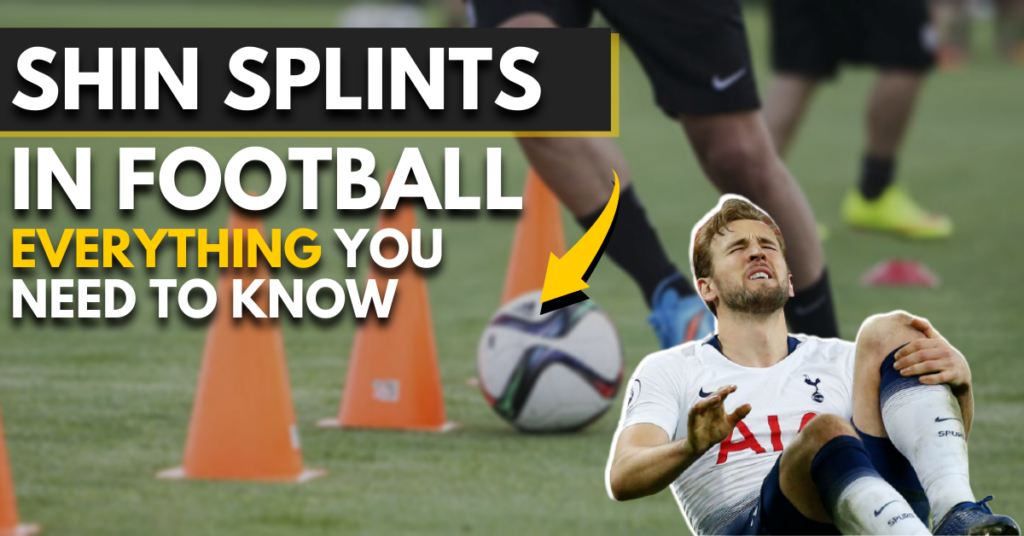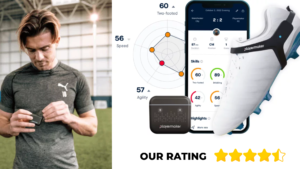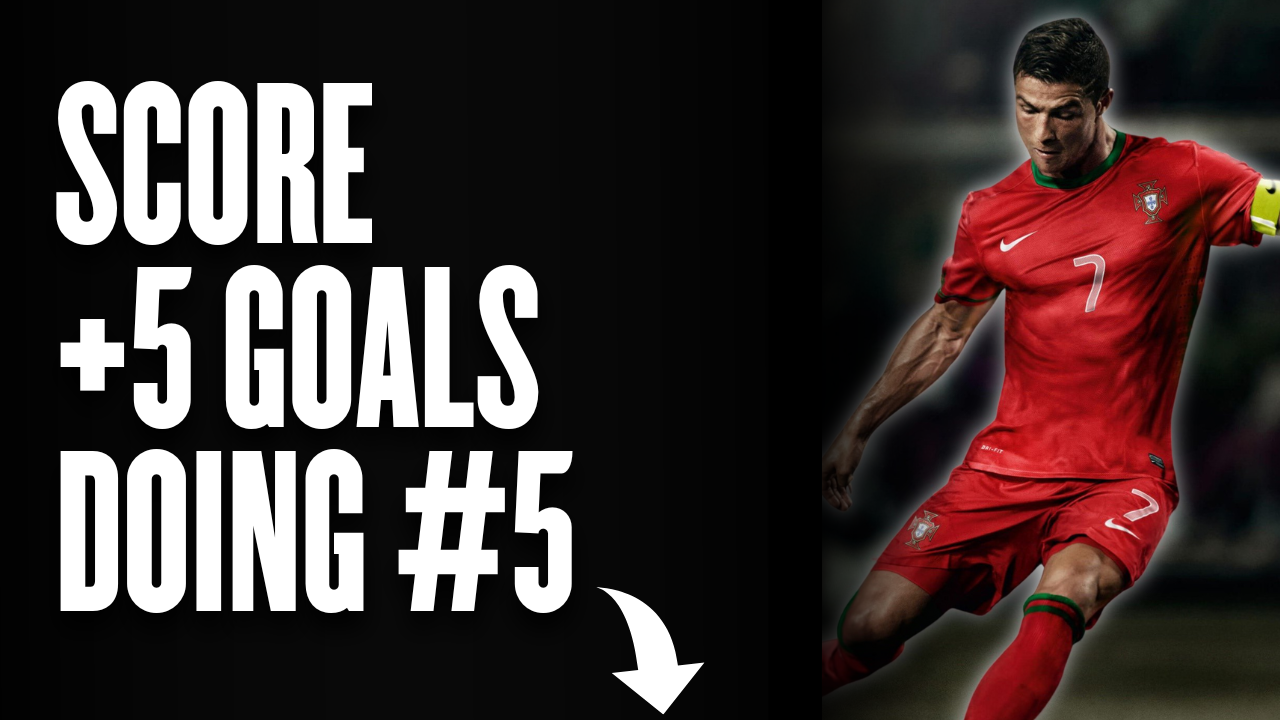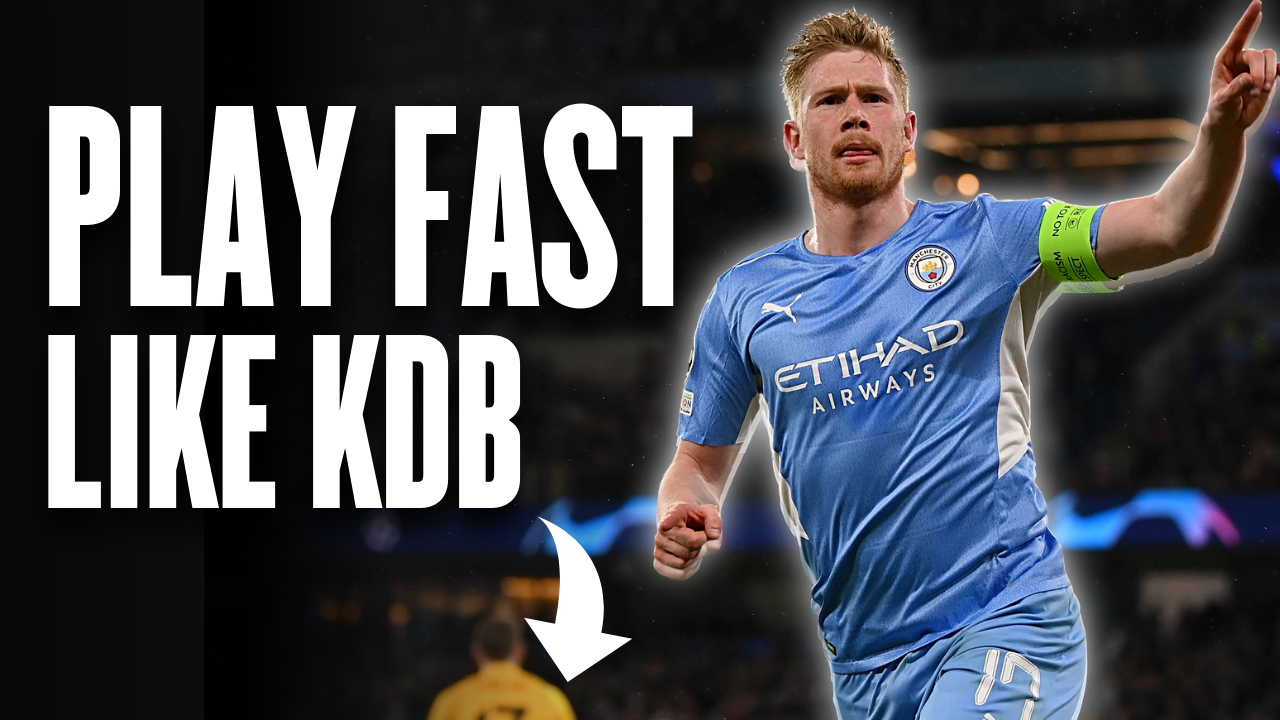
A question that we’ve been getting a lot since the day we started our Instagram page and website is how does a football player deal with shin splints? In fact, in a little survey, we ran on our Instagram page we found out that 56% of the surveyed players have experienced shin splints at least once in their career! If you fit right into this category, then this article is going to help you get out of it for good.
WHAT ARE SHIN SPLINTS IN FOOTBALL?
Shin Splints, or medically known as Medial Tibialis Stress Syndrome (MTSS), are overuse or repetitive-stress injuries that cause pain and inflammation around the shinbone (tibia) area. Various stress reactions of the shinbone (tibia) and surrounding musculature occur when the body is unable to heal properly in response to repetitive muscle contractions and shinbone (tibial) strain. [1]
Shin Splints are really common in the sports world – football included. A variety of factors such as increased physical activity, anatomic and movement deficits, improper footwear, and poor quality training environments are usually amonst the primary causes of it.
DO YOU SUFFER FROM SHIN SPLINTS?
Due to the overuse of the term “shin splints”, many footballers think they suffer from shin splints, however, this might not always be the case. As we’ve mentioned above, shin splints are related to a sharp, burning pain that is located in the shinbone area (tibia).
This pain is usually accompanied by a significant decrease in the ability to contract the muscles surrounding the shinbone with ease. This usually happens during ankle dorsiflexion (ankle and toes looking up) and plantarflexion (ankle and toes looking down). This movement of the ankle is common during activities such as walking, running, jumping, etc.
Many times, pain isn’t only limited to physical activity but can also transfer to every-day activities, such as walking.
Shin Splint Test
A little test you can do to find out if you’re suffering from shin splints is to lay down on your back and perform ankle dorsiflexion and plantarflexion. If you’re feeling a sharp pain in your shins, then you most probably suffer from shin splints.
Based on the severity of the pain, a series of actions are advised. Consulting an orthopedic doctor and/or physiotherapist are two great options, especially if the pain persists or comes back often.
WHAT ARE THE CAUSES OF SHIN SPLINTS IN FOOTBALL?
Shin splints in football and any other sport are multifactorial. We cannot isolate one factor and leave others unaffected. Identifying each and every factor that might have contributed to the development of shin splints is a necessary step to take in order to treat and prevent this injury from happening again.
Having said that, here is an overview of the most common causes of shin splints in football:
- Poor training methods/overtraining
- Weak/Unstable lower limbs and overall poor conditioning
- Anatomical abnormalities (over-pronation, knee valgus)
- Improper movement patterns
- History of previous injuries (shin splints or ankle/knee injuries)
- Improper footwear and poor-quality insoles
- Hard-playing surfaces
- Vitamin and mineral deficits
- Menstrual disorders (women)
- Excess body mass and/or fat (overweight)
Poor Training & Conditioning Level
When we’re talking about poor training methods, we’re really talking about excess training volume. Due to the fact that shin splints are overuse injuries in nature, they usually are a result of repetitive action of the ankle and/or knee joint. Therefore, if you apply higher training volumes inappropriately for extended periods of time you significantly increase the likelihood of shin splints. [1,4] In other words, doing “too much too soon” can be counterproductive.
On top of that, if the footballer is poorly conditioned, this will further increase the risk of suffering from shin splints. A program tailored to one’s needs and the application of progressive overload, proper training intensity, volume, and periodization is a must.

*As an affiliate, I'm earning from qualifying purchases without any extra charges being placed on you.
Anatomy/Movement Deficiencies
Another fact we need to take into consideration is the anatomy and the movement mechanics of the individual football player. As mentioned above, (over)pronation can be a major risk factor when it comes to shin splints. [2] This occurs when your ankle is partially dislocated due to anatomic abnormalities or previous lower-limb injury.
In terms of the latter, if proper rehabilitation isn’t ensured, then this will drastically increase the risk of shin splints at best, or other major injuries at worst.
Footwear, Insoles & Playing Surface
Many studies also point out the importance of footwear and insoles in one’s battle against shin splints. These two are directly associated with the playing surface. If one of those three factors is considered “poor”, then this equals a greater shock. Repetitive stress (training) combined with bad footwear, insoles, or a poor training pitch, can accelerate the occurrence of shin splints.
Vitamin & Mineral Deficiencies
Another risk factor that usually no-one thinks of is a vitamin and/or mineral deficiency.
Especially deficiencies in calcium, potassium, magnesium, or iron are proven to be related to muscle and joint injuries since these minerals play a major role in muscle contraction. Moreover, women that have menstrual disorders related to mineral deficiencies (especially iron) tend to develop such minor injuries more often.
Excess Weight & Fat Mass
Lastly, one of the studies we used for the purpose of this article also mentioned body mass as a risk factor. [3] According to that study, the higher the weight (and excess fat) the individual carries around, the higher the impact on the kinetic chain and subsequently the lower limbs. Having said that, the research on this risk factor is still not very clear, especially in football set-ups (studies are limited to the military).
HOW TO TREAT SHIN SPLINTS AS A FOOTBALLER?
The treatment process of shin splints is very simple and a visit to the physio is most of the time unnecessary.
The RICE Protocol – Do You Need It?
This process is primarily dependent on rest. Since shin splints are overuse injuries, treatment should involve active and passive rest, in order to ensure better blood flow to the affected regions and a decrease in training volume.
In addition to that, the RICE protocol (Rest – Ice – Compress – Elevate) can also be applied. Research and opinions on the RICE protocol are mixed, with many healthcare pros, physios, and coaches being for and against it (we will cover this in another article).
Here’s what we have to say.
The RICE protocol is suggested for use in situations where faster recovery is a need for the athlete. Given the weekly competitive schedule of the sport, athletes usually have to deal with pain, inflammation, and minor injuries in their daily and weekly lives. Therefore, the RICE protocol can be a useful tool for them during a competitive season, in order to deal with pain and inflammation.

*As an affiliate, I'm earning from qualifying purchases without any extra charges being placed on you.
On the other hand, it would also be wise to stay away from the protocol we mentioned and just let your body do what it is intended to do. Heal by itself.
Inflammation is a natural response of your body to any kind of trauma, with the aim of recovery. The RICE protocol, and especially the icing and compression parts, can intervene with your body’s immune response (inflammation) and “block” the pain, but also the recovery process. In other words, icing and compressing an inflamed region might significantly pain and inflammation, but against the favor of the appropriate recovery process.
Other Treatment/Recovery Options
There’s a big variety of recovery and rehabilitation tools and strategies you can utilize to combat shin splints. Here are some of them:
- Orthotics – treatment of anatomic abnormalities
- Footwear – appropriate to the playing surface and comfortable
- Nutrition & Supplementation – vitamins and minerals
LOWERING THE RISK OF SHIN SPLINTS IN FOOTBALL
Take care of your body and it will take care of you!
The best way to deal with an injury, minor or major, is to not get that injury in the first place.
Although prevention is most of the time not achievable (here’s WHY!), the footballer, as well as the coach and the whole training staff, can take control over this type of injury and minimize/prevent it from happening. This can happen in a variety of ways. Since injuries are multifactorial, you should pay attention to all of the following:
- Appropriate training periodization and progressive overload
- Strength and conditioning appropriate to playing level
- Anatomical evaluation and medical treatment (if needed)
- Movement pattern work
- Appropriate rehabilitation from past injuries
- Invest in higher quality and appropriate footwear and insoles/orthotics
- Avoid hard playing surfaces, like concrete, or bad turf pitches
- Systematic blood tests to discover mineral deficiencies
- Loss of excess fat mass
You need to take all of these into consideration when trying to prevent an overuse injury like shin splints. If you’re experiencing shin splints way too often (x1-2/month) you should probably schedule a visit to an orthopedic doctor, a physiotherapist, or a podiatrist to further examine the injury.
A holistic approach is a prerequisite to what people usually call “injury prevention”. Leaving several stones unturned can be the cause of an injury, whether minor or major. It is in your control to detect and solve all of your training and living deficits.
Take care of your body and it will take care of you!
(P)REHABILITATION EXERCISES & METHODS
Whether you’re dealing with shin splints on a constant basis or not, you need to invest in a more resilient body to minimize the risk of suffering from such a minor yet devastating injury.
In this part of the article, we’re going to suggest a series of exercises and methods that can be implemented in one’s (p)rehab work with the aim of minimizing the occurrence of shin splints.
Strength, Mobility, and Stabilization
The focus here is on the strength, mobility, and stabilization of the ankles, calves, hips, and core muscles, as these tend to be the most common weak-spots when it comes to shin splints.
- Calf Raises
- Resistance Band Exercises (resistance during plantarflexion or dorsiflexion)
- Hip Drives (with ankle dorsiflexion)
- Glute Bridges
- Planks
- Dead Bugs
- Palloff Variations
- Tibia Stretches
Click on an exercise to watch it on YouTube.
Almost every exercise mentioned is accompanied by several progressions as well as regressions. Consult your physiotherapist and coaching staff to introduce such exercises to your (p)rehabilitation program in a proper manner.
Movement Mechanics
As we’ve already mentioned anatomical and functional abnormalities and deficits are a major risk factor when it comes to shin splints. If your movement patterns aren’t efficient and ergonomic, this can lead to injuries as well as performance deficits.
You need to learn how to walk, run, sprint, take-off, and land as a footballer, in order to absorb the shock that these actions create. The more “efficiently” you can absorb shock, the fewer shin splints (and other injuries) you’re going to experience in the long run.
Exercise selection can vary based on your movement deficits. Therefore, in order to solve movement issues, you’ll need to evaluate the movements and have a clear perception of their technique.
CONCLUSION
Shin splints are a really common overuse injury in football. The causes of them might be several and not limited to one factor. Therefore, you need to adopt a holistic approach to treat and/or minimize this minor injury.
In most cases, shin splints can be treated without any medical intervention. However, if pain persists or shin splints are something really common for you (multiple times during a month) then you should further investigate the issue and maybe even address it on a medical note with a visit to a physio, orthopedic doctor, or podiatrist.
The most common causes revolve around training methodologies, movement deficiencies, and improper training environments and gear (footwear, insoles).
Evaluate the situation and make the necessary adjustments to combat this problem and minimize its occurrence.




